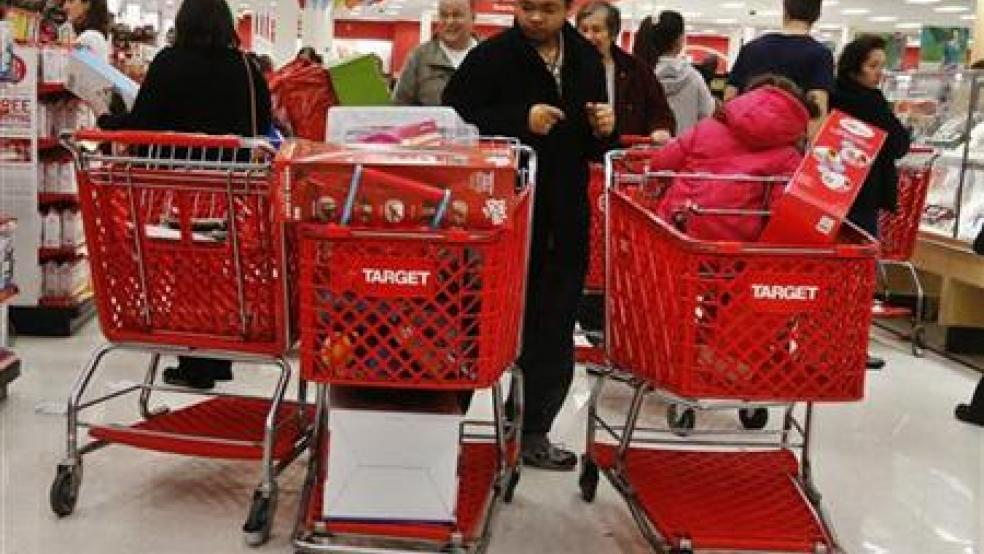2014 was a transitional period for the retail industry.
It was the year when mobile and online sales exploded, and retailers worked harder than ever to fuse their physical and digital stores. It was peppered with a number of high-profile CEO exits, including American Apparel's controversial Dov Charney and Target's Gregg Steinhafel.
Related: Why Mobile Retail Still Needs Fixing
And while it marked the beginning of some companies' big runs at the U.S. market—namely, Alibaba's initial public offering on the New York Stock Exchange—it also signaled what could be the beginning of the end for others, including Delia's and Deb Shops. "A lot of retailers rushed [into mobile] and didn't really do their homework," Anderson said.
Manav Mital, CEO and co-founder of Instart Logic technology, said that while a great mobile site was a competitive advantage a year ago, in 2015, the lack thereof will be a huge competitive disadvantage. "Retailers have realized that whiz-bang features like virtual dressing rooms don't make any difference if shoppers abandon their site because they are frustrated with site performance," he said.
Although Anderson anticipates most firms will focus their attention on optimizing their mobile sites, she said she doesn't think mobile apps are dead "by any sense." Instead, she predicts they will shift from pure shoppable applications to include such features as loyalty programs and editorial content.
Retail Gets ‘Microsized’
Retailers' store counts and sizes grabbed countless headlines in 2014—a trend that's expected to continue into the new year.
Target and Wal-Mart, which have traditionally operated in a big-box format, are two names that have already announced small-store initiatives for 2015. For its part, Wal-Mart plans to open 200 to 220 small-format stores in its new fiscal year; a Target spokeswoman said the retailer will open five TargetExpress locations in 2015, as well as one CityTarget.
Along with opening new formats, industry experts predict that as retailers' leases expire, many will opt to shrink their overall square footage by closing stores or trimming their size. "Smaller-format stores have appeal for obvious reasons, driven by urbanization, a rise in smaller households and consumers' changing notion of convenience," according to a recent report by consulting firm Daymon Worldwide.
Related: 3 High-Tech Ideas to Fraud-Proof Our Credit Cards
Lower-Income Consumers Catch a Break
One of Wal-Mart's biggest headwinds this year was a low-income consumer base that couldn't seem to catch a break. But Wells Fargo analyst Paul Lejuez said that should change in 2015, as prices at gas pumps plunge, and consumers aren't faced with another round of reductions in food stamp (SNAP) benefits.
"We believe retailers most likely to benefit are those exposed to lower-end consumers," said Lejuez, describing the customers as those who spend 10 percent or more of their income at the pump and heating their home. The retailers include Wal-Mart, Target, Kohl's and the dollar stores, he said.
That's not to say things will be easy for this shopper. According to Customer Growth Partners, about half of working-age adults are either in part-time roles or are still unemployed, while many who have jobs have seen their wages stagnate.
Strong Stay Strong, Weak Still Weak
May the best retailer win. As was the case in 2014, there will be a big divide between the retailers who are getting it right, and those who are struggling to survive. On the heels of Deb Shops' and Delia's Chapter 11 filings in December, all eyes will be on RadioShack. The struggling electronics chain reiterated in an SEC filing this month that it, too, may be required to seek bankruptcy protection.
Although things aren't looking quite as dire at Sears, industry experts will nonetheless be watching the department store, which is also experiencing a sales bleed. After pulling numerous levers to cut costs and keep the business afloat, the company said last month that it is considering converting hundreds of its stores into a real estate investment trust.
Sears is also in the process of closing a number of its underperforming stores—something CEO Eddie Lampert addressed in a recent blog post on the company's website. "We have a very flexible real estate portfolio which gives us time to try to turn around underperforming locations, without the potential burden of long-term losses that would otherwise prevent us from taking these risks," he said.
Related: 5 Ways Online Shopping Can Drag Down Retail Profits
What Won’t Happen
For all the changes anticipated next year, Forrester Research cautioned people shouldn't get ahead of themselves in certain areas. Among the things analysts Sucharita Mulpuru and Andy Hoar don't expect will happen in 2015: Apple Pay won't replace old-fashion credit and debit cards; Alibaba won't transform the online landscape in the U.S.; and online grocery sales won't have a breakthrough year.
According to the research firm, there are a number of obstacles facing Apple Pay, including the fact that iPhone 6 penetration is still small among mobile users. Alibaba's U.S. strategy has been "underwhelming to date," with further challenges coming from American consumers who are slow to shift their allegiances.
Regarding the $1 trillion grocery business, "Online grocery continues to be the least penetrated of all online categories because of the challenges of cost-effectively delivering fresh and frozen foods," the report said.
According to Forrester, online penetration of grocery sales was only 2 percent in 2013.
This article originally appeared in CNBC.
Read more in CNBC:
Online grocery a tough sell despite all the buzz
High-end shopper thrives while low-income survives
Sears to accelerate closings, shutter 235 stores




